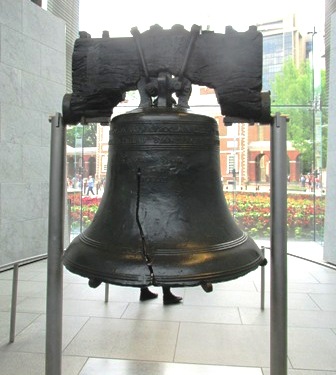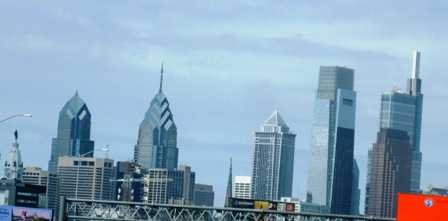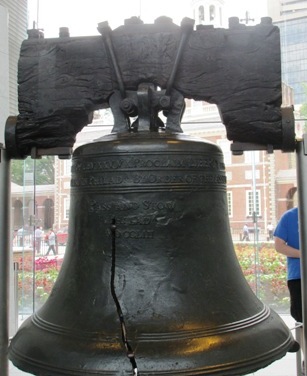Philadelphia
The Liberty Bell
There is a charm about the old city of Philadelphia. The modern metropolis sprawls across the banks of the Delaware River (which divides Pennsylvania from New Jersey), but the city's historic district isn't overwhelming in terms of size and complexity. Blair Williams and I were there on an all-too-short one day excursion and we were able to cover a fair amount of ground, both literally and figuratively.
A fleeting shot of the city skyline from the car
as we
were driving into Philadelphia
The capital of the state of Pennsylvania (named after it's founding father, William Penn), Philadelphia came into existence in 1682. The city has great historical significance in for this is where the Founding Fathers (Benjamin Franklin, Thomas Jefferson, John Adams and George Washington—to name a few) signed the Declaration of Independence in 1776.
We joined a walking tour led by a very knowledgeable guide and, along with a group of about twenty or so folks, we explored several of the city's historial buildings and monuments and were regaled with interesting anecdotal snippets as well as factual information.
Speaking of "old neighbourhoods" here are two pictures of Elfreth's Alley a cobbled lane dating back to 1702 and reputedly the nation's oldest residential street. The 32 historic residences have been continuously occupied to the present day, and the small street has been designated a National Historic Landmark.
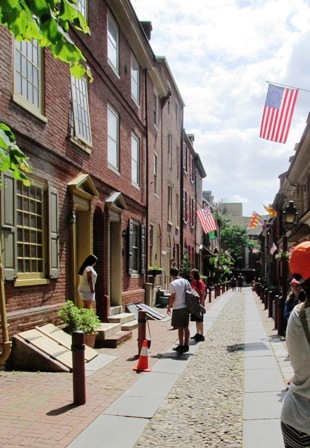 |
 Elfreth's Alley |
|---|
Here are some historic landmarks along our route:
 The first bank of the United States completed in 1797. The first bank of the United States completed in 1797. |
 Merchants Exchange Building (1834):
the oldest existing stock exchange building in the United States, Merchants Exchange Building (1834):
the oldest existing stock exchange building in the United States, |
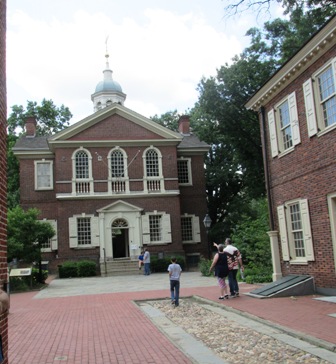 Carpenters' Hall housed the seven-week session of the First Continental Congress when it met in 1774. |
 The Philosophical Society Building |
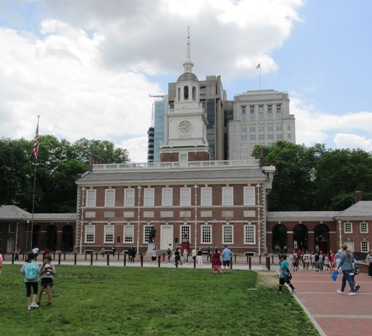 Independence Hall |
 A side view of Independence Hall |
Independence Hall is, by every estimate, the birthplace of the United States. It was within its walls that the Declaration of Independence was adopted and the Constitution of the United States was debated, drafted and signed. That document is the oldest federal constitution in existence and was framed by a convention of delegates from 12 of the original 13 colonies.
 Congress Hall Dais |
 Impressive Congress Hall |
 Desks in Congress Hall Desks in Congress HallWith a little imagination one can "see" the assembly of Founding Fathers seated here more than two centuries ago. |
Congress Hall was the seat of the US Congress from December 6th 1790 to May 14th 1800. It was here that the US Bill of Rights was ratified, and was in service at the time of George Washington and John Adams presidenial terms.
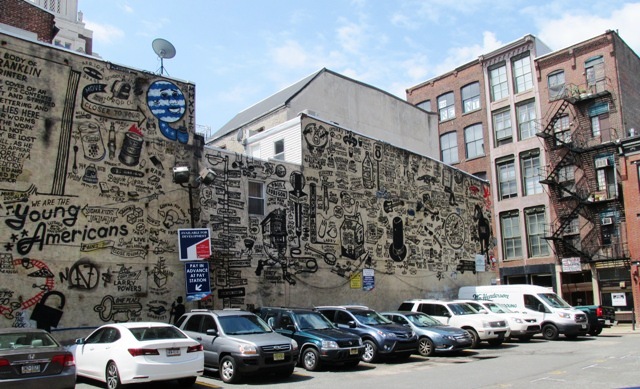 Graffiti wall and fire escape stairs Graffiti wall and fire escape stairs |
 Steve "ESPO" Powers graffiti wall Steve "ESPO" Powers graffiti wall |
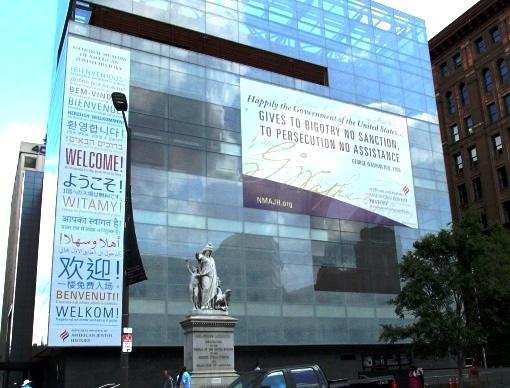
 Portraits of the Dalai Llama and Nelson Mandela in the Liberty Bell Centre |
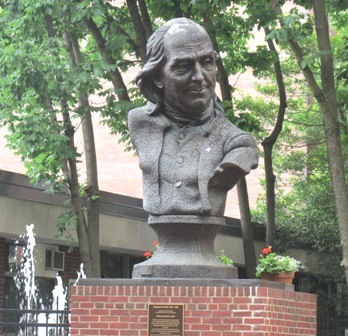 Philadelphia's favourite and most gifted son: Benjamin Franklin |
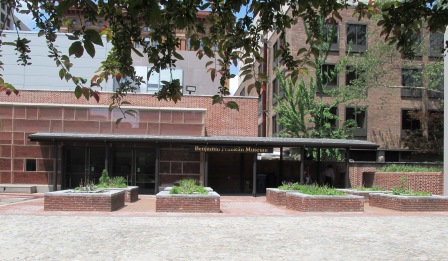 Benjamin Franklin Museum |
Apart from being one of the Founding Fathers of the USA, Benjamin Franklin was an extraordinarily gifted and versatile individual. An author, printer, political theorist, politician, freemason, scientist, inventor, statesman, civic activist and diplomat, he is also credited with inventing the lightning rod, bifocals and what is known as the Franklin stove. He is also the founder of the University of Pennsylvania. A memorial stone stands at the corner of Christ Church yard where he is buried.
How did the crack in the Liberty Bell happen? The Liberty Bell is the iconic symbol of American Independence. Professor Constance M. Greiff observed: "The Liberty Bell is the most venerated object in the park, a national icon. It is not as beautiful as some other things that were in Independence Hall in those momentous days two hundred years ago, and it is irreparably damaged. Perhaps that is part of its almost mystical appeal. Like our democracy it is fragile and imperfect, but it has weathered threats, and it has endured" The bell acquired its distinctive large crack some time in the early 19th century—a widespread story claims it cracked while ringing after the death of Chief Justice John Marshall in 1835. The bell became famous after an 1847 short story claimed that an aged bellringer rang it on July 4, 1776, upon hearing of the Second Continental Congress's vote for independence. Despite the fact that the bell did not ring for independence on that July 4, the tale was widely accepted as fact, even by some historians. Beginning in 1885, the City of Philadelphia, which owns the bell, allowed it to go to various expositions and patriotic gatherings. The bell attracted huge crowds wherever it went, additional cracking occurred and pieces were chipped away by souvenir hunters. The last such journey occurred in 1915, after which the city refused further requests. (Wikipedia) |
Bye-bye Philadelphia: Homeward bound...
crossing the Delaware on the Ben Franklin Bridge
